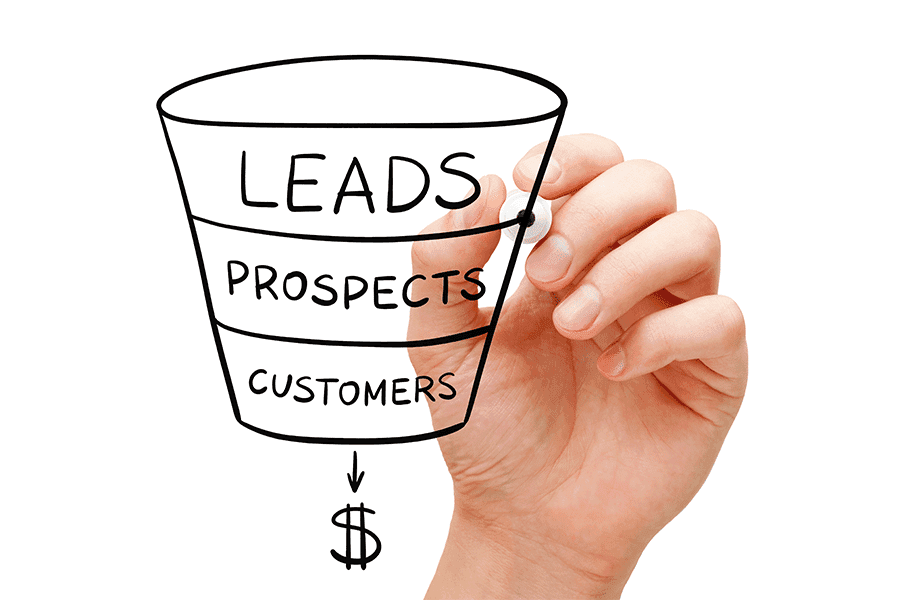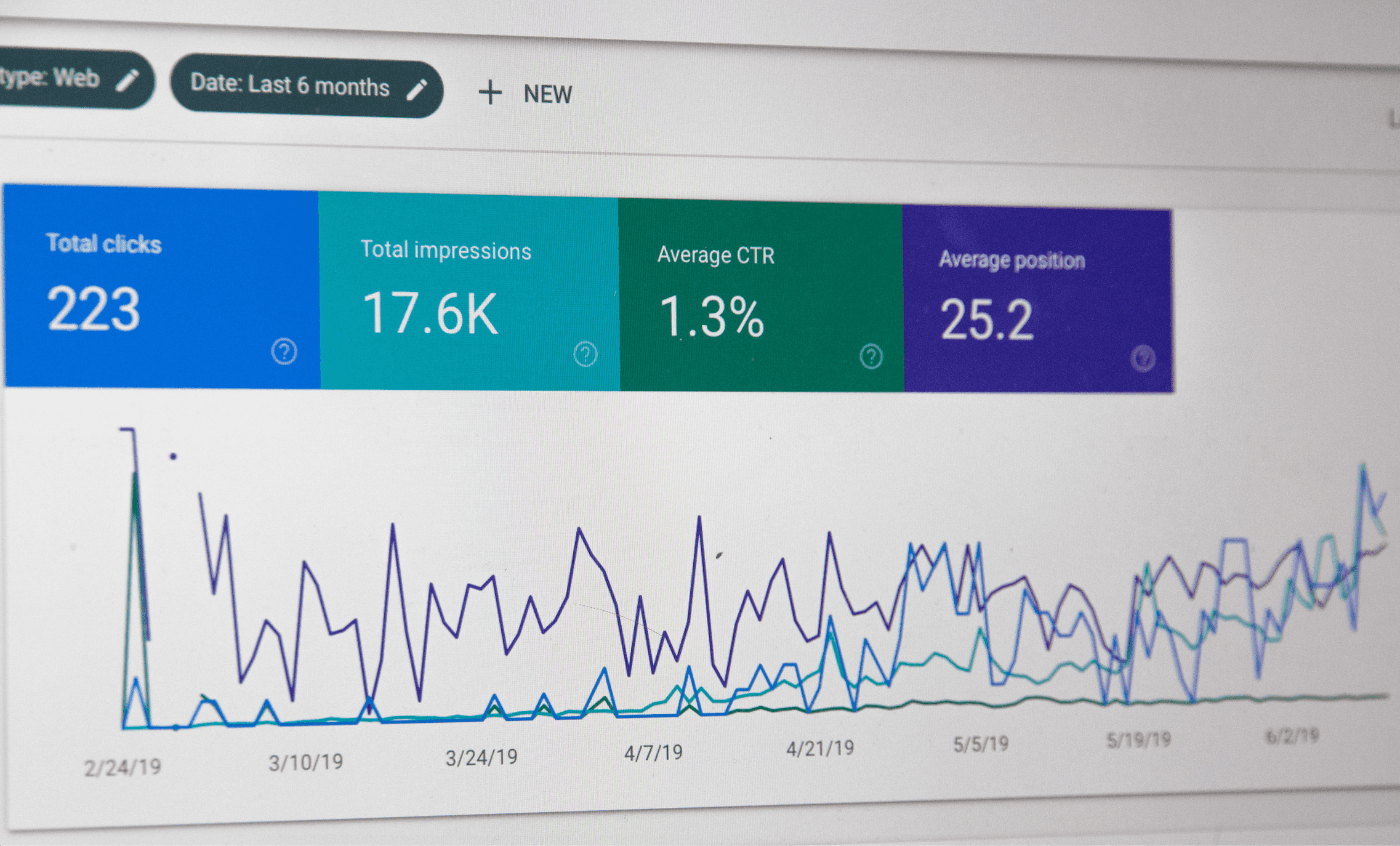SEO vs. SEM: What the Heck Is the Difference?
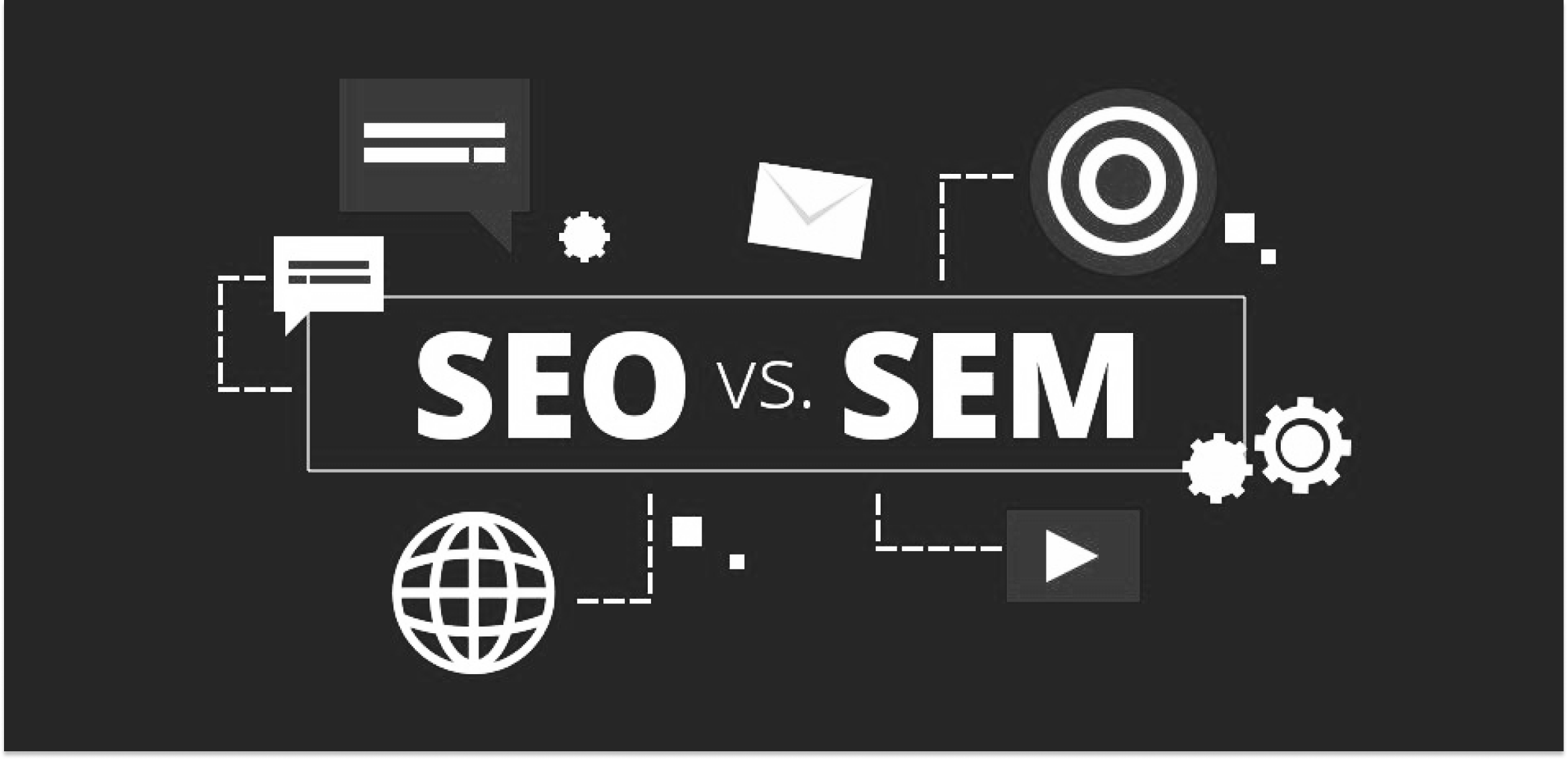
The difference between Search Engine Optimization (SEO) and Search Engine Marketing (SEM) is pretty straightforward. SEO is concerned with increasing traffic from organic search results. On the other hand, SEM focuses on increasing website traffic using paid and organic searches. In this comparison guide, we’ll explain how each works, their main differences, and which is the best for your business based on your short-term and long-term goals.
Article Overview:
• What is Search Engine Marketing (SEM)
• What is Search Engine Optimization (SEO)
• What is Pay Per Click (PPC)?
• SEO, PPC, Or Both: What Should You Choose?
• SEO vs. SEM: How Long Does It Take to See Results?
• SEO vs. SEM: How Much Do They Cost?
What is SEM?
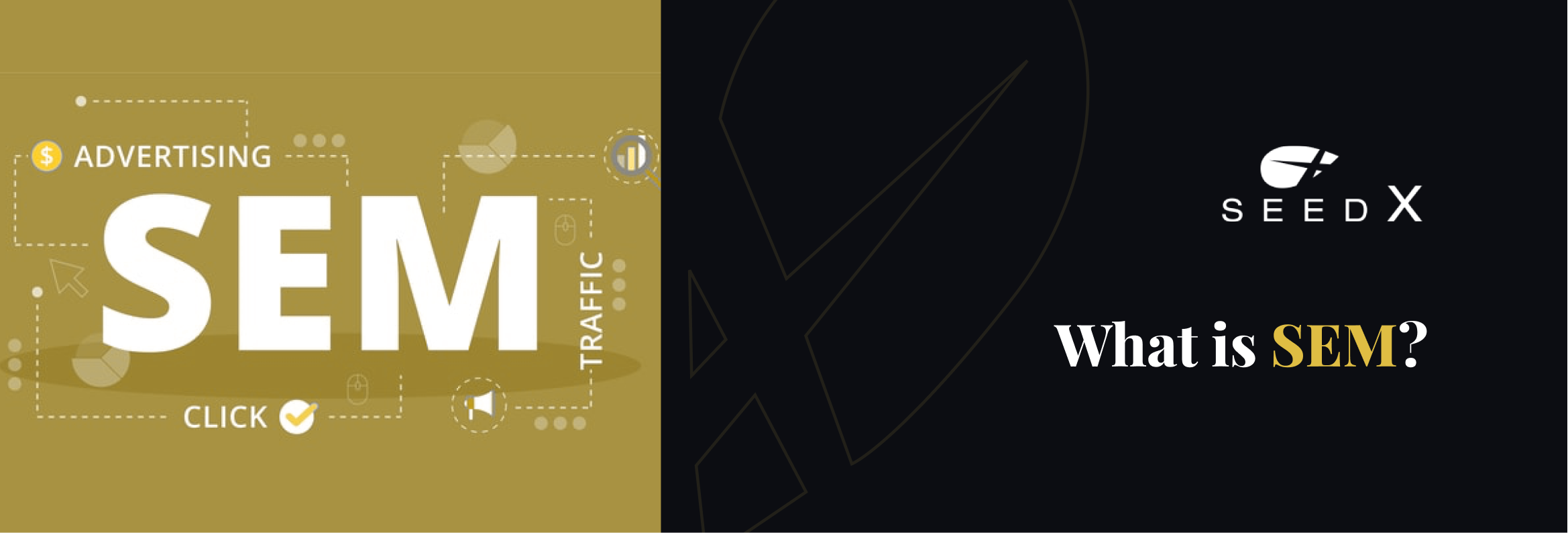
Search engine marketing (SEM) is the process of driving traffic to your website using both paid and organic results. SEM utilizes both SEO and PPC. SEO drives traffic from organic results, while PPC drives traffic from paid results.
What is SEO?
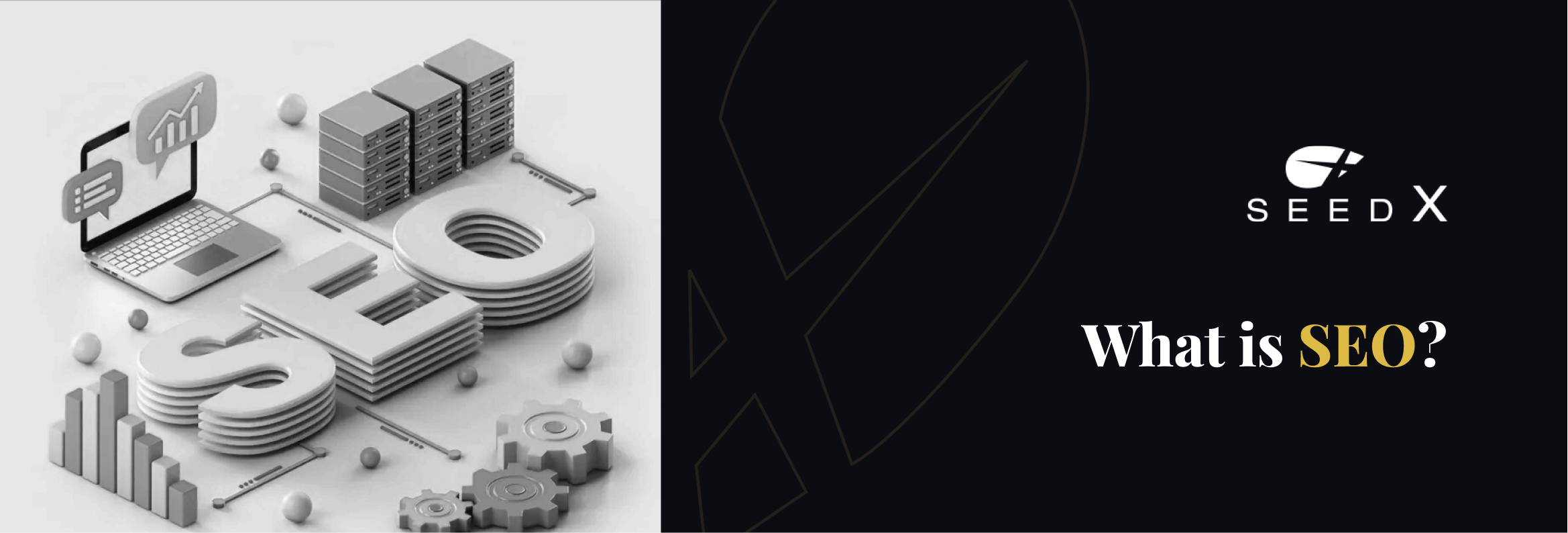
Search Engine Optimization (SEO) is the process of optimizing a website in order to rank higher in organic search engine results. Google normally considers over two hundred factors in its algorithm when ranking a website page. There are four main steps considered for SEO optimization:
• Keyword research – Understand what your audience is looking for
• On-page SEO – Create content and optimize it for your audience
• Off-page SEO – Build authority by building connections with other websites
• Technical SEO – Ensure your website is properly indexed so that search engines can easily crawl and find your content.
1. Keyword Research
Keyword research is the first step of any successful SEO strategy. It will help you understand what your ideal audience is looking for on Google and show you the exact words you should use to capture the highest amount of traffic. You can use Keyword research tools like Ahrefs, Semrush, and Ubersuggest to identify what your customers are looking for.

2. On-Page SEO
On-page SEO is the process of optimizing a web page for search engines. On-page optimization helps Google understand what your content is all about and recommend it to the right people. It also helps users quickly identify if your content is what they are looking for. Some basic optimization tactics you can use include content optimization, internal linking, URL optimization, and title tag optimization. One simple tactic you can use right now is adding your keyword to the title tag, URL, and meta description.

To rank higher in search engines, also consider optimizing your content for search intent, user experience, click-through rate, bounce rate, and page loading speed.
3. Off-page SEO
Off-page SEO involves optimizing signals that are outside your website. A great example is backlink optimization. Backlinks to a web page increase your authority and show Google that other websites in your domain of expertise recommend your content. This is like a vote from other players, and it shows Google that your content is valuable. You can optimize your backlinks using a tool like Linkody.

4. Technical SEO
Technical SEO ensures that your website can be found, crawled, and indexed by Google. It would be tragic if you put out great content but no one ever saw it. This step ensures that never happens.
5. User Interaction Signals
With Google’s latest update, user interaction signals are a more critical role in determining how well websites rank. A user’s interaction with your content helps Google determine if your content is relevant to their search. For instance, if your website has a low bounce rate, it could signal to Google that your content is highly relevant to their search query. This can result in higher rankings for that specific keyword.
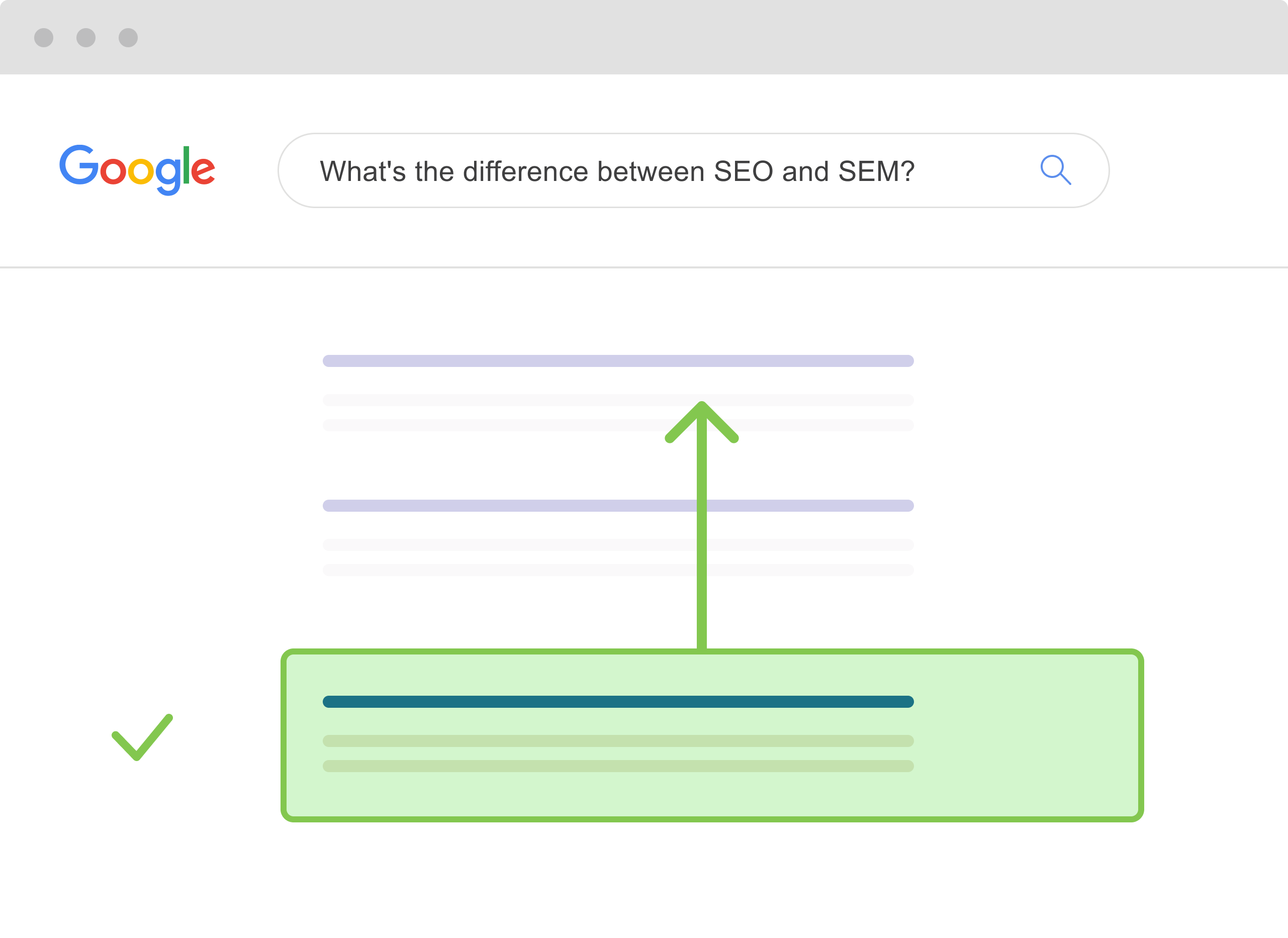
What is PPC?
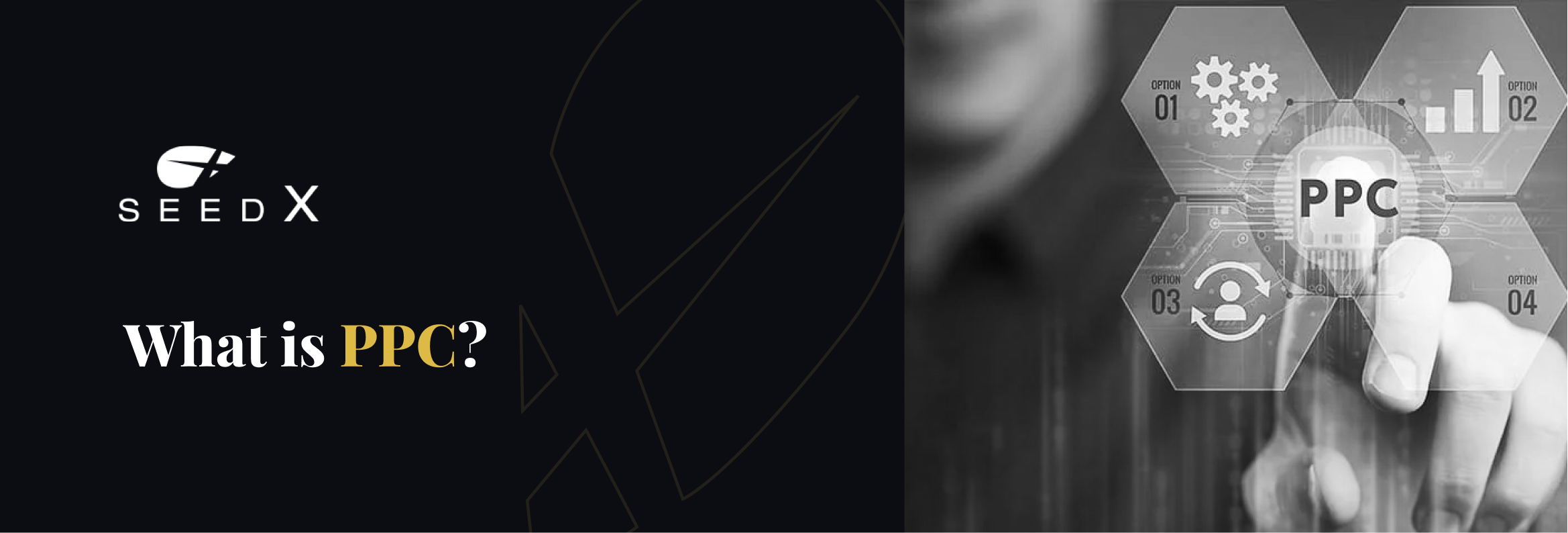
Pay-per-click (PPC) is a form of search engine marketing where you pay a fee every time someone clicks on your ad. It is like “buying visits” to your site. This is the opposite of SEO. SEO deals with organic search results, while PPC deals with paid search results. PPC advertising involves:
• Keyword research – You need to understand what your customers are looking for.
• Bid setting – Here, you set the amount you are willing to pay for a click.
• Ad creation – Create persuasive and relevant ads.
• Audience targeting – Choose who you want to reach with your ad
1. Keyword research
In PPC, keyword research goes beyond understanding what your audience is looking for. You need to also research what keywords are available and how much ads will cost based on your target keywords.
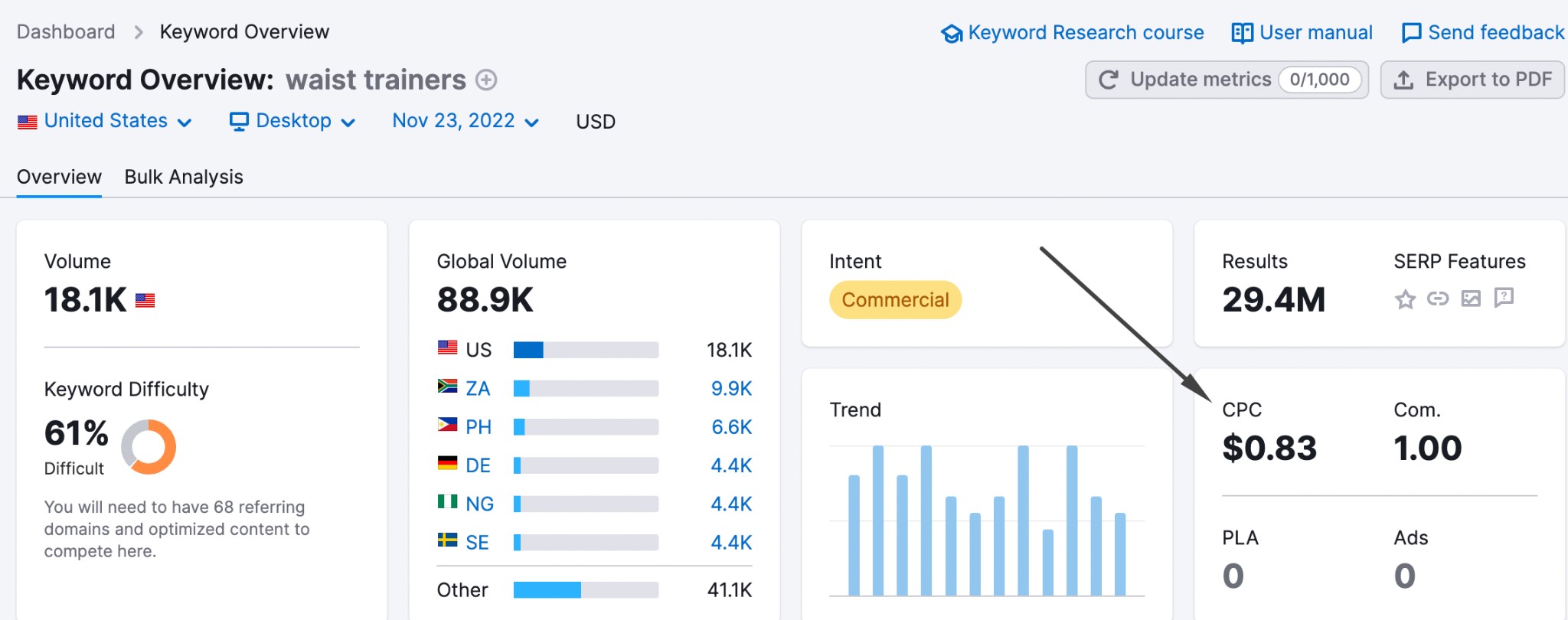
2. Bid setting
In this step, you determine the amount you want to spend and set the amount you are willing to pay per click for a specific keyword. This is like an online auction. If your competitor places a higher bid on a similar keyword, your ad will be shown less, and you won’t get many clicks since more traffic will be redirected to the highest bidder.

3. Ad creation
This step involves creating the ad creative and copy for your campaign. Google normally analyzes the complete ad and gives a quality score that shows how relevant your ad is. The higher the quality score, the higher chance your ad will be shown to more people and the lower the cost per click (CPC).
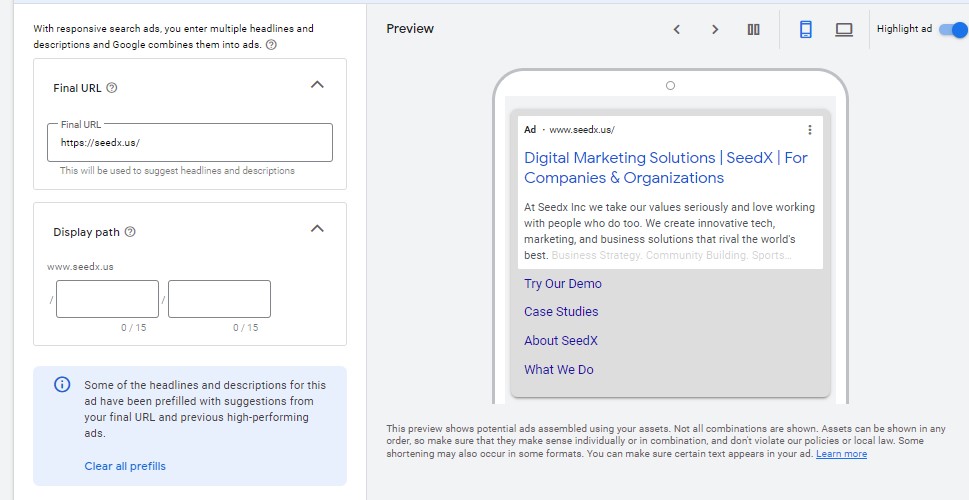
4. Audience targeting
Audience targeting is all about selecting the right audience for your ad based on their interests, geographic location, age, gender, etc.

Also Read: SEO: Grow Your Website Traffic 456% by Being More Meta | SeedX
SEO, PPC, Or Both: What Should You Choose?
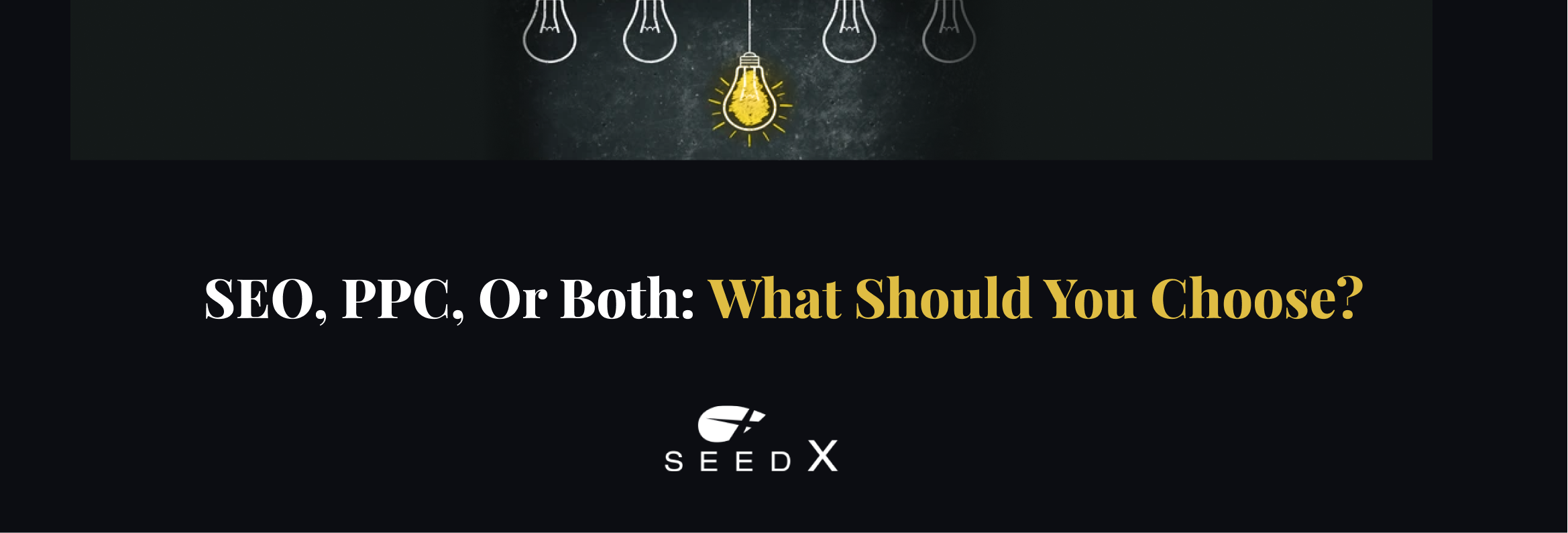
1. SEO is the best strategy for informational keywords
When it comes to selecting between SEO and SEM based on keywords, SEO is better for keywords with informational intent, where people are looking to learn. PPC, on the other hand, is better for keywords with transactional intent, where people want to buy an item. Transactional intent leads to higher conversions for PPC and a bigger return on investment.
2. PPC is the best short-term SEM strategy for “hard to rank for” keywords
The truth is, ranking for certain keywords can take a long time. This is because some brands have established themselves as ‘authorities’ in certain keyword categories since they have been in business for a longer time. This makes it hard to beat them using organic SEO. However, you can use SEM to outrank them in the short term and get your website to the top. For example, if you want to rank for “best protein powder” with a new supplements store, your chances of ranking in the short term are slim because you’re going up against established brands like Amazon.
PPC is also great for producing instant results. If you don’t know what keywords to go for, you can test using PPC to find your high-value keywords. In our tests, we found that more specific keywords yielded better results than generic terms. For instance, we were able to find better clients by focusing on keywords like SEO agency, email marketing agency, etc., compared to broader terms like marketing agency.
3. Using PPC and SEO is the best SEM strategy for ad-heavy keywords
Even if you are in first place on Google search results, you can never get all the traffic for a specific keyword. The most you can get is about 10-20% of the traffic. However, combining both allows you to maximize the amount of traffic driven to your website from keywords. In general, we almost always recommend doing both.
SEO vs. SEM: How Long Does It Take to See Results?
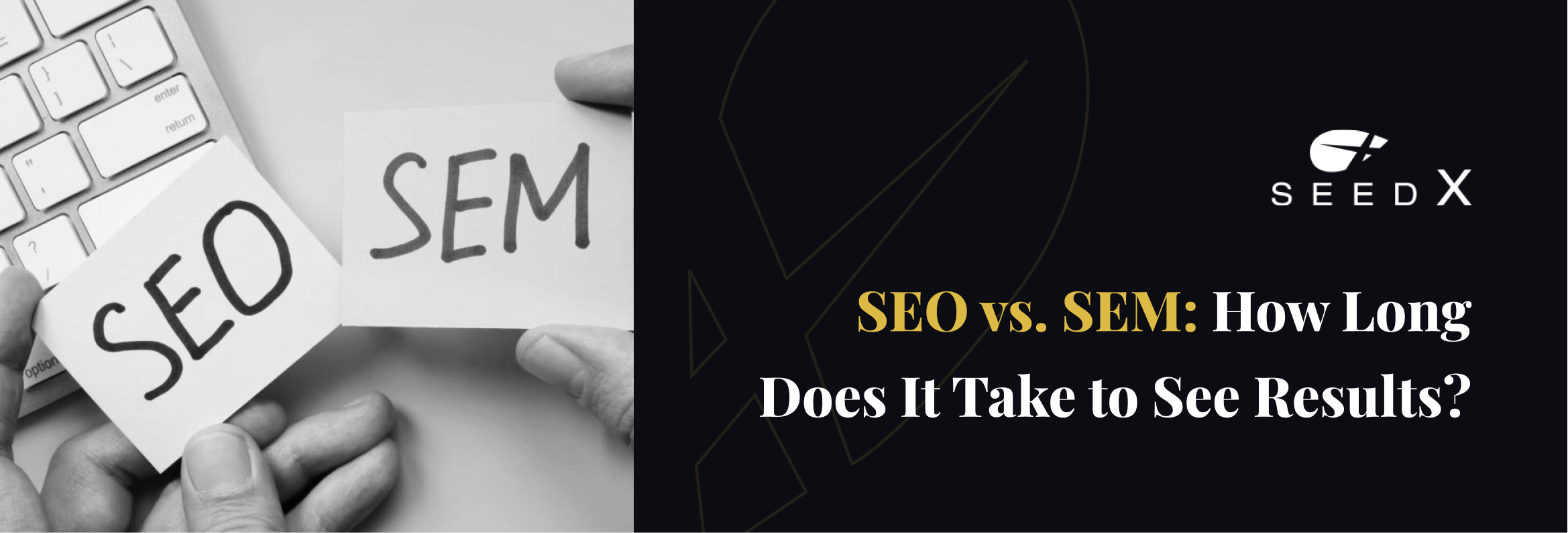
The biggest difference between SEO and SEM is the time it takes to see results. SEO takes longer. Much, much longer compared to SEM.
This can especially be the case if your site is new and you haven’t gained any backlinks yet to build your domain authority. A study done by Ahrefs established that it takes about two years for a website page to rank on Google’s first page.
However, this is not the final verdict concerning SEO. It is possible to rank your website pages in months by implementing SEO best practices and targeting long-tail keywords. Long-tail keywords tend to have a lower search volume, making it easier and more likely to rank fast.
SEM, particularly PPC, is much faster than SEO. It is instant. Google starts showing your ad as soon as you publish it. You can put out an ad in the afternoon and begin seeing traffic and conversions in the evening. However, that doesn’t mean you will get a return on your investment on the first day. Running a PPC campaign and seeing results are two entirely different things. Sometimes, it takes months of tweaking, testing, and iterating to find what works and get results from PPC.
The bottom line is: PPC is faster than SEO. And it may be the better choice if you are looking for fast results.
SEO vs. SEM: How Much Do They Cost?
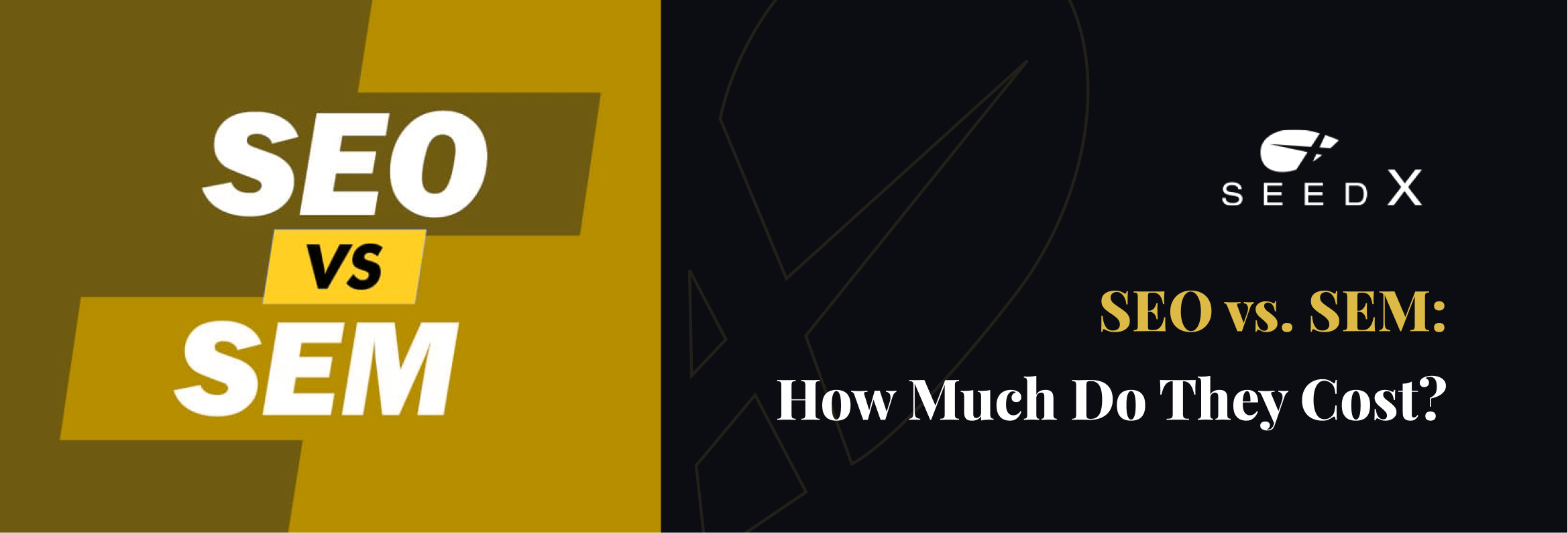
SEO is popularly described as “free organic traffic”, but in real sense, it is not free. In order to rank your website on Google’s first page, you need to invest a great deal of time, energy, and even money. You need to pay for SEO tools, researchers, writers, and designers. And if you are doing it yourself, you need to invest precious time into the work.
PPC can be more expensive or cheaper than SEO, depending on how you look at it. In the short term, it is normally cheaper than SEO because even though you spend cash upfront, you get results fast! It takes far less to launch a PPC campaign than to do SEO optimization. Additionally, PPC can run automatically, but SEO is a hands-on task.
The only downside with PPC is that as soon as you stop paying, your traffic drops to zero. However, once you rank with SEO, you don’t need to do much to maintain your rankings. That’s why we advise businesses to consider both SEO and SEM as part of their strategy.
Also Read: How SEO Can Skyrocket Your Traffic 15607% – SeedX Inc.
Conclusion

SEO and PPC are vital in any successful marketing strategy and can be used to get the desired results. The key is knowing when and where to apply each method. We hope that this article answered all your questions and gave you much-needed clarity.
If you are looking for an SEO agency to help you with creating a foolproof strategy and help you execute it, we’re here for you. Simply reach out to us today, and we will help you rank higher on Google search results and increase your visibility in a sustainable and scalable way.
FAQS
1. Is SEO or SEM better? Neither is better than the other. It all comes down to your business goals and what you want to achieve in the short term and long term.
2. What is the difference between SEO and SEM? SEO is the process of optimizing your website in order to drive traffic using organic results. SEM is the use of paid and organic results to drive website traffic. Both SEO and SEM rely on organic results to drive traffic. The only difference is SEM has a paid media aspect that relies on PPC to drive traffic.






